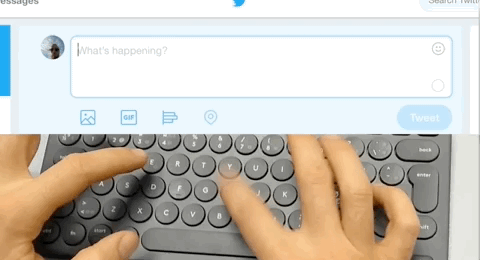A keyboard on which if you type too fast, it will refuse to process your input properly.
Electronics as objects are created by humans to serve specific needs and purposes. Numerous times though they do not perform as expected, and most of those times it is attributable to human error. People are unaware of technology and its behavior. They tend to treat electronic artifacts as black boxes. Humans design arcane rituals around the technology they utilize, since they don’t have a complete understanding of the technical processes of those technologies. Lazy keyboard was designed around those norms. It poses the questions of what if a common and stable technology – the keyboard – behaves in a disobedient way, without the user understanding why that behavior emerges. It tests the expectations people have from the keyboard – a common item that is being used for years – and displays that when our expectations are broken, frustration arises. What is the line between usable and unusable technology? The lazy keyboard is able to complete the task desired to complete, but we have to respect its playful behavior and obey its rules.
Role: Interaction Designer
The project was part of a course in Play Design and it was two weeks under development. My role was to design and build up those toys in collaboration with one more team member.
For this implementation we use a Bluetooth keyboard as the input device for the Raspberry Pi. The speed at which you are allowed to type without having the Raspberry Pi change your letters into b, l, a or h, is set to one character per half second. We understand character as any key press on the keyboard. This means that pressing backspace will still delete a character but if you press it in too fast succession of another character you will write one of the blah letters.
Our design is posing a comical reality about how the written word has evolved during the past years. More and more people are using chat-based communication, and as a result, people type a high volume of words every day. The Lazy Keyboard is attempting to ridicule this behavior, by forcing the user to type slower if they want to deliver the message they want, allowing them to firstly reflect on the message they are sending, and secondly to reflect to the whole process of typing and texting. The “blah” serves as placeholder, that attempts to showcase the idea that “less is more”. The future of the product lies in the Raspberry Pi’s image file. The file will be open sourced and available for everyone to download. Then, by just installing it on their own Raspberry Pi, one can create the Lazy Keyboard. This will allow people to interact and experiment with the artifact, and critical play will arise, subverting the current system of communications, and making the user reflect on the aforementioned ideas.

Leave a Reply